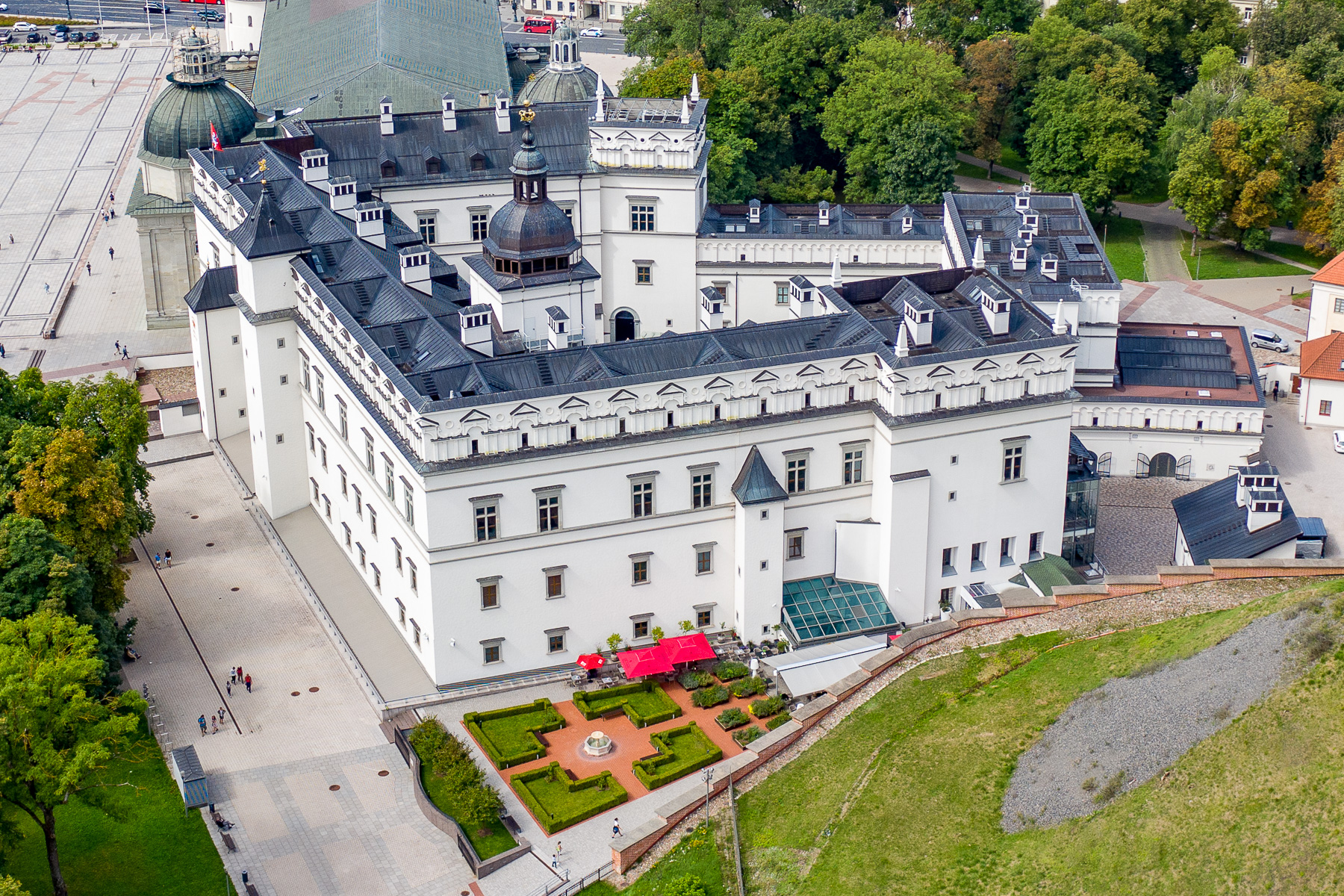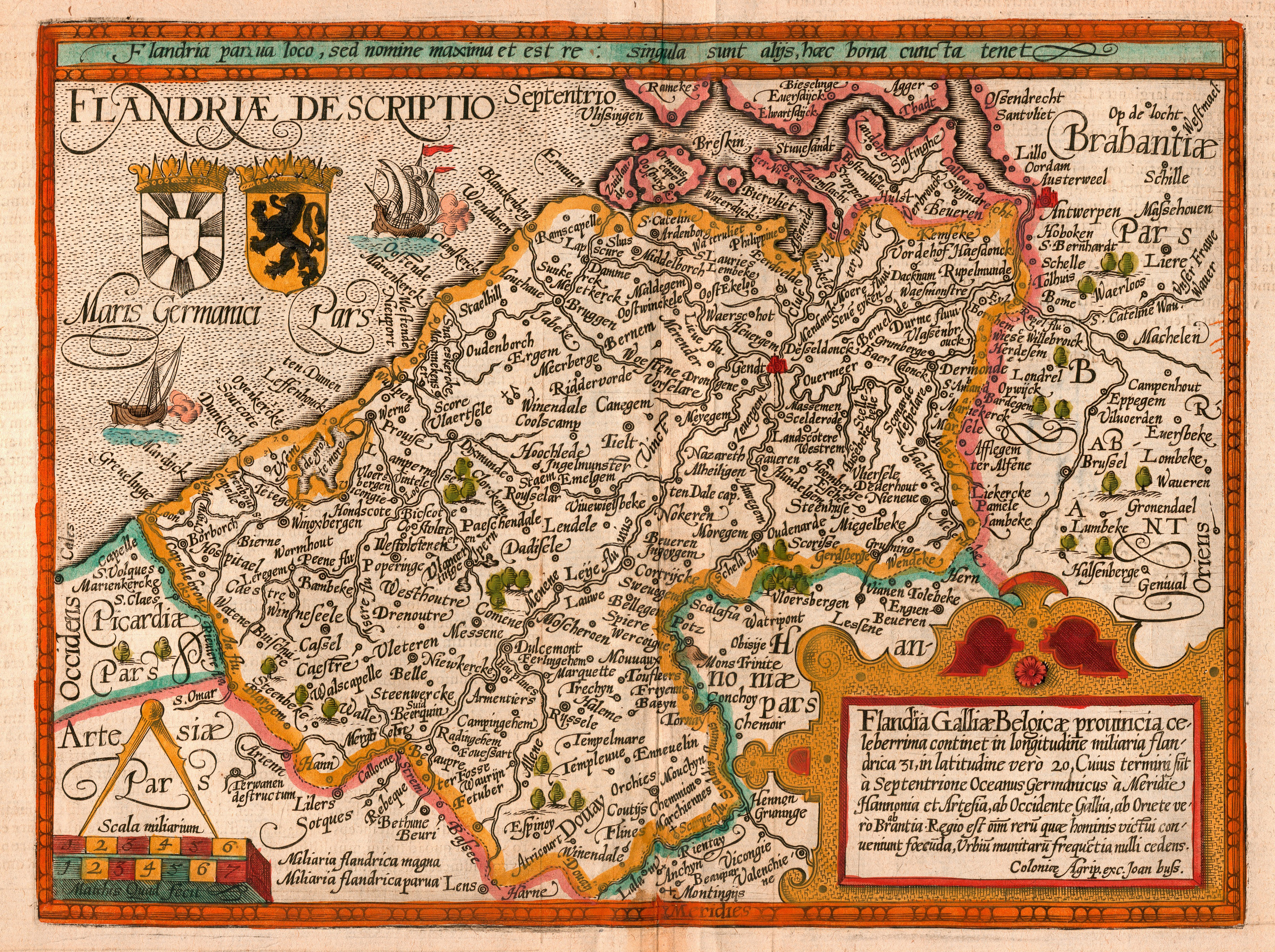|
Trakai Island Castle
Trakai Island Castle () is an island castle located in Trakai, Lithuania, on an island in Lake Galvė. The construction of the stone castle was begun in the 14th century by Kęstutis, and around 1409 major works were completed by his son Vytautas the Great, who died in this castle in 1430. Trakai was one of the main centers of the Grand Duchy of Lithuania and the castle held great strategic importance. The castle was rebuilt in the 1950s–1960s by Lithuanian initiative, although it had received resistance from Soviet authorities. The Trakai History Museum was established after the reconstruction. Construction First phase Trakai Island Castle was built in several phases. During the first phase, in the second half of the 14th century, the castle was constructed on the largest of three lake islands by the order of Grand Duke Kęstutis. The construction of Trakai Island Castle was related to the expansion and strengthening of the Trakai Peninsula Castle. Kęstutis moved his mai ... [...More Info...] [...Related Items...] OR: [Wikipedia] [Google] [Baidu] |
Trakai
Trakai (; see Trakai#Names and etymology, names section for alternative and historic names) is a city and lake resort in Lithuania. It lies west of Vilnius, the capital of Lithuania or just from the administrative limits of the Lithuanian capital city. Because of its proximity to Vilnius, Trakai is a popular tourist destination. Trakai is the administrative centre of Trakai district municipality. The city is inhabited by 5,357© Department of Statistics to the Government of the Republic of Lithuania M3010210: Population at the beginning of the year. people, according to 2007 estimates. A notable feature of Trakai is that the city was built and preserved by people of different nationalities. Historically, communities of Crimean Karaites, Karaims, Lipka Tatars, Tatars, Lith ... [...More Info...] [...Related Items...] OR: [Wikipedia] [Google] [Baidu] |
Storey
A storey (English in the Commonwealth of Nations, Commonwealth English) or story (American English), is any level part of a building with a floor that could be used by people (for living, work, storage, recreation, etc.). Plurals for the word are ''storeys'' (UK, CAN) and ''stories'' (US). The terms ''floor'', ''level'', or ''deck'' are used in similar ways as storey (e.g., "the 16th ''floor''"). However, when referring to an entire building, it is more usual to use storey or story (e.g., "a 16-''storey'' building"). The floor at ground or street level is called the ''ground floor'' (i.e. it needs no number); the floor below ground is called ''basement'', and the floor above ground is called "first" in many regions. However, in some regions, like the US, ''ground floor'' is synonymous with ''first floor'', leading to differing numberings of floors, depending on region – even between different national varieties of English. The words ''storey'' and ''floor'' normally exclud ... [...More Info...] [...Related Items...] OR: [Wikipedia] [Google] [Baidu] |
Lithuanian Metrica
The Lithuanian Metrica or the Metrica of the Grand Duchy of Lithuania (, , or ''Lietuvos didžiosios kunigaikštystės metrika''; , or ''Metryka Wielkiego Księstwa Litewskiego''; , ) is a collection of the 14–18th-century legal documents of the Chancellery of the Grand Duchy of Lithuania (GDL). Maintained systematically since the 2nd half of the 15th century, metrica consisted, initially and primarily, of the copies of the documents issued by the Grand Duke, Lithuanian Council of Lords, and Seimas. The Metrica also included some important externally originated documents (like translations of the issues (''yarlyks'') of the Crimea Khans, copies of the Muscovy diplomatic documents etc.), the office-keeping documental materials (like registers of acts, inventories of the Metrica itself etc.) The selection of the classes of the documents included in the Metrica had increased since the 2nd half 15th – 16th century and even more so in the 17–18th centuries, extending to includ ... [...More Info...] [...Related Items...] OR: [Wikipedia] [Google] [Baidu] |
Renaissance
The Renaissance ( , ) is a Periodization, period of history and a European cultural movement covering the 15th and 16th centuries. It marked the transition from the Middle Ages to modernity and was characterized by an effort to revive and surpass the ideas and achievements of classical antiquity. Associated with great social change in most fields and disciplines, including Renaissance art, art, Renaissance architecture, architecture, politics, Renaissance literature, literature, Renaissance exploration, exploration and Science in the Renaissance, science, the Renaissance was first centered in the Republic of Florence, then spread to the Italian Renaissance, rest of Italy and later throughout Europe. The term ''rinascita'' ("rebirth") first appeared in ''Lives of the Artists'' () by Giorgio Vasari, while the corresponding French word was adopted into English as the term for this period during the 1830s. The Renaissance's intellectual basis was founded in its version of Renaiss ... [...More Info...] [...Related Items...] OR: [Wikipedia] [Google] [Baidu] |
Sigismund Augustus
Sigismund II Augustus (, ; 1 August 1520 – 7 July 1572) was King of Poland and Grand Duke of Lithuania, the son of Sigismund I the Old, whom Sigismund II succeeded in 1548. He was the first ruler of the Polish–Lithuanian Commonwealth and the last male monarch from the Jagiellonian dynasty. Sigismund was elder of two sons of Italian-born Bona Sforza and Sigismund the Old, and the only one to survive infancy. From the beginning he was groomed and extensively educated as a successor. In 1529 he was chosen as king in '' vivente rege'' election while his father was still alive. Sigismund Augustus continued a tolerance policy towards minorities and maintained peaceful relations with neighbouring countries, with the exception of the Northern Seven Years' War which aimed to secure Baltic trade. Under his patronage, culture flourished in Poland; he was a collector of tapestries from the Low Countries and collected military memorabilia as well as swords, armours and jewellery. Sigism ... [...More Info...] [...Related Items...] OR: [Wikipedia] [Google] [Baidu] |
King Of Lithuania
This is a list of Lithuanian monarchs who ruled Lithuania from its inception until the fall of the Grand Duchy of Lithuania in 1795. The Lithuanian monarch bore the title of Grand Duke, with the exception of Mindaugas, who was crowned king in 1253. Other Lithuanian rulers, such as Vytautas the Great, also attempted to secure a royal coronation, but these efforts were unsuccessful.Nadveckė, Ineta (6 July 2019Trys Lietuvos karaliai: vienas tikras, vienas nelabai ir vienas beveik'' LRT''. Until 1569, the Lithuanian monarchy was hereditary. In 1386, Grand Duke Jogaila was elected King of Poland. From that point onward, with some interruptions, the two states were united in a personal union, sharing a common ruler until 1569, when they were formally merged by the Union of Lublin to form the Polish–Lithuanian Commonwealth. The monarch of this new state was elected in a free election by the entire nobility. From the Christianization of Lithuania until 1569, the inauguration of th ... [...More Info...] [...Related Items...] OR: [Wikipedia] [Google] [Baidu] |
Guillebert De Lannoy
Guillebert de Lannoy (also Gilbert, Guilbert or Ghillebert; 1386–1462), was a Flemings, Flemish traveler and diplomat, chamberlain to the duke of Burgundy, governor of the fort of Sluys, and a knight of the Golden Fleece. He was the son of Guillebert I de Lannoy and Catherine of Molembais. He was a member of the noble Lannoy (noble family), de Lannoy family. His brothers were Hugo of Lannoy and Baldwin of Lannoy, also founding Knights of the Golden Fleece. Guillebert first served Jean de Werchin, seneschal of Hainaut, and accompanied him to the East and to Spain. He then served John the Fearless in his war against the Prince-Bishopric of Liège and the Armagnac–Burgundian Civil War. He then joined the Teutonic Knights in the Polish–Lithuanian–Teutonic War. Guillebert also fought in 1415 against the English in the Battle of Azincourt, Battle of Azincourt or Agincourt, where he was wounded and captured. In the service of Philip the Good, he discharged several diplomati ... [...More Info...] [...Related Items...] OR: [Wikipedia] [Google] [Baidu] |
Flemish People
Flemish people or Flemings ( ) are a Germanic peoples, Germanic ethnic group native to Flanders, Belgium, who speak Flemish Dutch. Flemish people make up the majority of Belgians, at about 60%. ''Flemish'' was historically a geographical term, as all inhabitants of the medieval County of Flanders in modern-day Belgium, France and the Netherlands were referred to as "Flemings" irrespective of their ethnicity or language. The contemporary region of Flanders comprises a part of this historical county, as well as parts of the medieval Duchy of Brabant and the medieval County of Loon, where the modern national identity and Flemish culture, culture gradually formed. History The sense of "Flemish" identity increased significantly after the Belgian Revolution. Prior to this, the term "" in the Dutch language was in first place used for the inhabitants of the former County of Flanders. Flemish, however, had been used since the 14th century to refer to the language and dialects of both ... [...More Info...] [...Related Items...] OR: [Wikipedia] [Google] [Baidu] |
Romanesque Architecture
Romanesque architecture is an architectural style of medieval Europe that was predominant in the 11th and 12th centuries. The style eventually developed into the Gothic style with the shape of the arches providing a simple distinction: the Romanesque is characterized by semicircular arches, while the Gothic is marked by the pointed arches. The Romanesque emerged nearly simultaneously in multiple countries of Western Europe; its examples can be found across the continent, making it the first pan-European architectural style since Imperial Roman architecture. Similarly to Gothic, the name of the style was transferred onto the contemporary Romanesque art. Combining features of ancient Roman and Byzantine buildings and other local traditions, Romanesque architecture is known by its massive quality, thick walls, round arches, sturdy pillars, barrel vaults, large towers and decorative arcading. Each building has clearly defined forms, frequently of very regular, symmetrical ... [...More Info...] [...Related Items...] OR: [Wikipedia] [Google] [Baidu] |
Gothic Architecture
Gothic architecture is an architectural style that was prevalent in Europe from the late 12th to the 16th century, during the High Middle Ages, High and Late Middle Ages, surviving into the 17th and 18th centuries in some areas. It evolved from Romanesque architecture and was succeeded by Renaissance architecture. It originated in the Île-de-France and Picardy regions of northern France. The style at the time was sometimes known as ''opus Francigenum'' (); the term ''Gothic'' was first applied contemptuously during the later Renaissance, by those ambitious to revive the Classical architecture, architecture of classical antiquity. The defining design element of Gothic architecture is the Pointed arch (architecture), pointed arch. The use of the pointed arch in turn led to the development of the pointed rib vault and flying buttresses, combined with elaborate tracery and stained glass windows. At the Abbey of Basilica of Saint-Denis, Saint-Denis, near Paris, the choir was rec ... [...More Info...] [...Related Items...] OR: [Wikipedia] [Google] [Baidu] |







